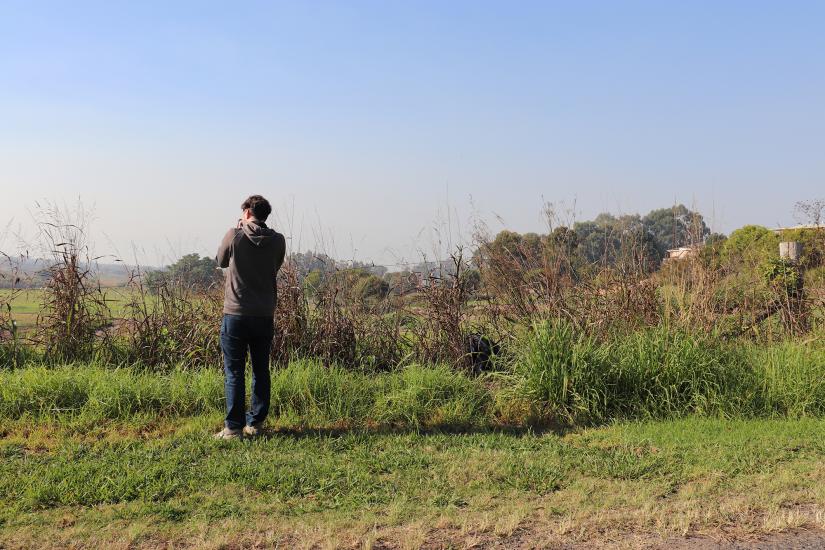
The view of Warragamba Dam from Burragorang Lookout. Photo: popejon2
Australia’s largest urban water supply provides clean water to more than 3.5 million people in NSW, but the Warragamba Dam also creates a flood risk that threatens lives and properties on the floodplain below. This scenario represents a unique challenge for landscape architects – and it’s one that UTS students are raring to solve.
As part of the third year of the UTS Bachelor of Landscape Architecture, students have been tasked with developing cost-effective flood mitigation solutions that consider surrounding landscapes, river systems and ecosystems alongside urban development.
The work is intended to equip students with the capacity to design for large regional systems in a way that responds to the local environment, and to incorporate questions of landscape connectivity and biodiversity as key to the planning process.
“The question is, how can urban settlements and landscape environments co-evolve so that one doesn’t exist at the expense of the other?” says Professor Penelope Allan, Director of Landscape Architecture at UTS.
“What we’re trying to do is show how closely you can integrate urban and landscape environments as new hybrid systems so that there’s a reciprocal relationship between them.”
Though their projects, the students have been asked to provide an alternative to an existing government proposal to raise the Warragamba Dam wall – a move that activists fear could lead to increased and detrimental development on the floodplain.

UTS Landscape Architecture students have been investigating alternative solutions to raising the dam wall. Photo: Maksym Kozlenko.
It’s this political element that really resonates with student Lenny Ellis, who is focusing on reclaiming the natural environment below the dam rather than aiding urban development. His work is based on the premise of Garden in Motion, a work by French landscaper Gilles Clement, in which a parcel of land is left untouched so that plants can grow unhindered.
“I’m interested in restoring that area and its value as part of the cyclic process that enriches it,” Ellis says.
Ellis is particularly interested in the remediation of local soils, the quality of which he believes has been negatively impacted by the dam’s construction and subsequent extraction activities in the area. Healthier soil communities will improve the health of surrounding ecosystems and will also reduce the impacts of cyclical flooding by reducing run-off.

Documenting the landscape. Photo: Daniel Ledger.
This commitment to restoring an existing environment that embraces flooding and other natural systems, rather than designing for activities that sit in opposition to it, is a gesture that Ellis also considers to be symbolic of the type of cooperative systems needed to tackle critical human problems.
“It’s about at recovering and restoring that system so that it actually benefits us, without us taking away and extracting from that system. I think that’s an important value, not just for land consideration but for society at large,” he says.
For course convener Professor Allan, developing a sense of social and environmental justice is a critical component of transforming students into effective landscape architects. She believes that students need become adept at driving change at a local scale while retaining a sense of how that change might impact regional and global landscapes and environments.
“Advocacy, from a landscape architecture perspective, is really important as urban settlements expand, because expansion typically happens at a cost to critical environments,” she says.
“And while those environments are important in their own right, humans also rely on them for their own survival. The question is how can we act in such a challenging situation – how can a landscape architect make a difference?”

